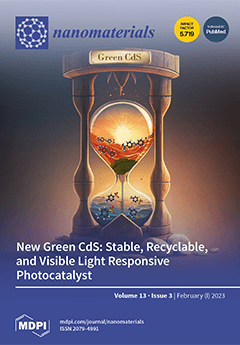Poly(methyl methacrylate) (PMMA) is a commonly used material, as it is biocompatible and relatively cheap. However, its mechanical properties and weak antibiofilm activity are major concerns. With the development of new technology, 3D-printed resins are emerging as replacements for PMMA. Few studies have investigated the antibiofilm activity of 3D-printed resins. Therefore, this study aimed to investigate the antibiofilm activity and surface roughness of a 3D-printed denture base resin modified with different concentrations of zirconium dioxide nanoparticles (ZrO
2 NPs). A total of 60 resin disc specimens (15 × 2 mm) were fabricated and divided into six groups (n = 10). The groups comprised a heat-polymerized resin (PMMA) group, an unmodified 3D-printed resin (NextDent) group, and four 3D-printed resin groups that were modified with ZrO
2 NPs at various concentrations (0.5 wt%, 1 wt%, 3 wt%, and 5 wt%). All specimens were polished using a conventional method and then placed in a thermocycler machine for 5000 cycles. Surface roughness (Ra, µm) was measured using a non-contact profilometer. The adhesion of
Candida albicans (
C. albicans) was measured using a fungal adhesion assay that consisted of a colony forming unit assay and a cell proliferation assay. The data were analyzed using Shapiro–Wilk and Kruskal–Wallis tests. A Mann–Whitney
U test was used for pairwise comparison, and
p-values of less than 0.05 were considered statistically significant. The lowest Ra value (0.88 ± 0.087 µm) was recorded for the PMMA group. In comparison to the PMMA group, the 3% ZrO
2 NPs 3D-printed group showed a significant increase in Ra (
p < 0.025). For the 3D-printed resins, significant differences were found between the groups with 0% vs. 3% ZrO
2 NPs and 3% vs. 5% ZrO
2 NPs (
p < 0.025). The highest Ra value (0.96 ± 0.06 µm) was recorded for the 3% ZrO
2 NPs group, and the lowest Ra values (0.91 ± 0.03 µm) were recorded for the 0.5% and 5% ZrO
2 NPs groups. In terms of antifungal activity, the cell proliferation assay showed a significant decrease in the
C. albicans count for the 0.5% ZrO
2 NPs group when compared with PMMA and all other groups of 3D-printed resins. The group with the lowest concentration of ZrO
2 NPs (0.5%) showed the lowest level of
C. albicans adhesion of all the tested groups and showed the lowest
Candida count (0.29 ± 0.03). The addition of ZrO
2 NPs in low concentrations did not affect the surface roughness of the 3D-printed resins. These 3D-printed resins with low concentrations of nanocomposites could be used as possible materials for the prevention and treatment of denture stomatitis, due to their antibiofilm activities.
Full article






